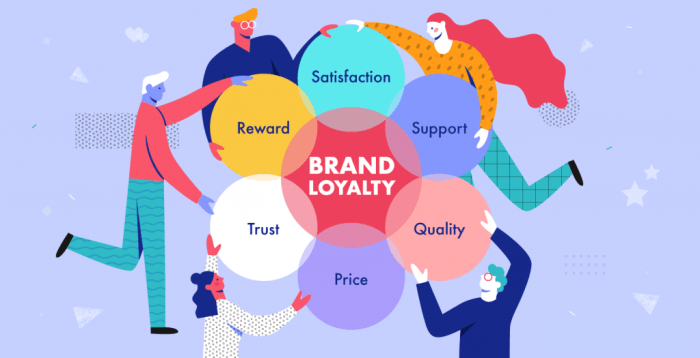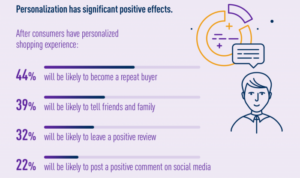Building a Brand Loyalty Program sets the stage for businesses to connect with their customers on a deeper level, fostering lasting relationships and driving success. Get ready to dive into the world of brand loyalty and discover the strategies that can take your company to new heights.
Building a Brand Loyalty Program

Brand loyalty is the dedication and preference that consumers have for a particular brand over others in the market. It is crucial for businesses as it leads to repeat purchases, increased customer lifetime value, and positive word-of-mouth marketing.
Benefits of Having a Brand Loyalty Program
- Increased Customer Retention: A brand loyalty program encourages customers to keep coming back to earn rewards, leading to higher retention rates.
- Boost in Sales: Loyal customers tend to spend more and purchase more frequently, resulting in increased sales for the company.
- Word-of-Mouth Marketing: Satisfied and loyal customers are more likely to recommend the brand to others, helping in acquiring new customers through referrals.
- Data Collection: Loyalty programs provide valuable customer data that can be used to personalize marketing efforts and improve overall customer experience.
How a Brand Loyalty Program Helps in Retaining Customers
- Rewards and Incentives: Offering rewards, discounts, or exclusive perks to loyal customers makes them feel valued and appreciated.
- Emotional Connection: Loyalty programs create an emotional bond between the customers and the brand, leading to long-term relationships.
- Consistent Engagement: Regular communication and engagement with loyal customers through the program help in staying top-of-mind and building stronger relationships.
Types of Brand Loyalty Programs
Brand loyalty programs are essential for businesses looking to retain customers and increase repeat purchases. There are various types of loyalty programs that companies can implement to achieve these goals. Let’s explore some of the most common types and their effectiveness.
Points-based Loyalty Programs
Points-based loyalty programs are one of the most popular types where customers earn points for purchases that can be redeemed for rewards or discounts. These programs are effective in encouraging repeat purchases and creating a sense of achievement for customers. An example of a successful points-based loyalty program is the Starbucks Rewards program, where customers earn stars for every purchase that can be redeemed for free drinks or food items.
Tier-based Loyalty Programs
Tier-based loyalty programs categorize customers into different tiers based on their level of engagement or spending. Customers can unlock various benefits and rewards as they move up the tiers. This type of loyalty program is effective in incentivizing customers to increase their spending to reach the next tier. An example of a successful tier-based loyalty program is Sephora’s Beauty Insider program, where customers can unlock perks like free makeovers and exclusive products as they move up the tiers.
Paid Loyalty Programs
Paid loyalty programs require customers to pay a fee to access exclusive benefits and rewards. While this type of loyalty program may seem counterintuitive, it can be highly effective in creating a sense of exclusivity and driving customer loyalty. An example of a successful paid loyalty program is Amazon Prime, where members pay an annual fee to access perks like free shipping and exclusive deals.
Non-monetary Loyalty Programs
Non-monetary loyalty programs focus on rewarding customers with experiences or personalized services rather than discounts or rewards. These programs are effective in creating emotional connections with customers and fostering long-term loyalty. An example of a successful non-monetary loyalty program is the Nike Run Club, where customers can access exclusive virtual races and training programs.
Designing a Brand Loyalty Program
When it comes to designing a brand loyalty program, there are several key steps involved in creating a successful program that keeps customers coming back for more. Determining the rewards and incentives offered, as well as focusing on personalization, are crucial aspects of designing a brand loyalty program.
Key Steps in Designing a Brand Loyalty Program
- Identify your target audience and their preferences to tailor the program accordingly.
- Set clear objectives and goals for the loyalty program to measure its success.
- Create a simple and user-friendly loyalty program structure that is easy for customers to understand and engage with.
- Utilize technology and data analytics to track customer behavior and preferences to personalize the program.
- Establish a communication strategy to keep customers informed about the program and engaged with the brand.
Determining Rewards and Incentives
- Offer a variety of rewards that appeal to different customer segments, such as discounts, exclusive offers, free products, or VIP experiences.
- Consider the value proposition of the rewards to ensure they are attractive enough to encourage repeat purchases and loyalty.
- Regularly review and update the rewards to keep the program fresh and exciting for customers.
Importance of Personalization
- Personalizing the loyalty program based on customer preferences and behavior can increase engagement and loyalty.
- Utilize customer data to tailor rewards and offers to individual customers, making them feel valued and special.
- Implement personalized communication strategies to keep customers engaged and connected to the brand.
Implementing and Managing a Brand Loyalty Program

Implementing and managing a brand loyalty program requires careful planning and execution to ensure its success. It involves strategies for launching the program, promoting it to customers, and effectively managing and monitoring it for continued success.
Launching a Brand Loyalty Program, Building a Brand Loyalty Program
Launching a brand loyalty program involves setting clear objectives and goals for the program. It is essential to define the target audience, determine the rewards and benefits offered, and establish a communication plan to introduce the program to customers. Additionally, creating a seamless user experience and ensuring that the program is easy to join and navigate are crucial for a successful launch.
Promoting the Loyalty Program
Promoting the loyalty program to customers requires a multi-channel approach. Utilize social media, email marketing, in-store signage, and other promotional tactics to raise awareness about the program. Offering exclusive promotions or discounts to loyalty program members can incentivize customers to join and participate. Personalized messaging and targeted campaigns can also help increase engagement and encourage participation.
Managing and Monitoring the Program
To effectively manage a brand loyalty program, it is essential to track and analyze customer data to understand their behavior and preferences. Utilize customer relationship management (CRM) software to monitor program engagement, track reward redemptions, and identify areas for improvement. Regularly review the program’s performance, gather feedback from participants, and make adjustments as needed to ensure continued success.





